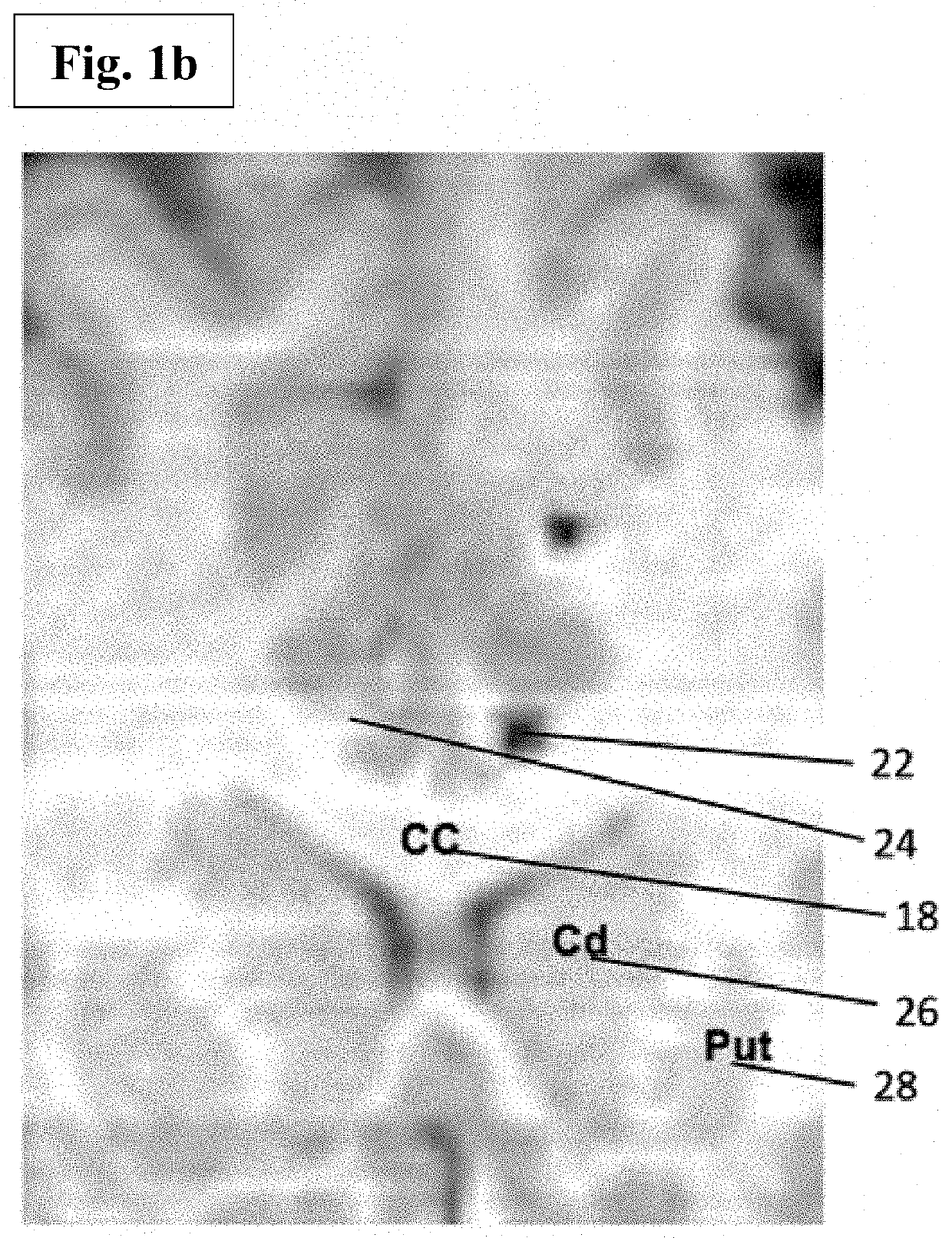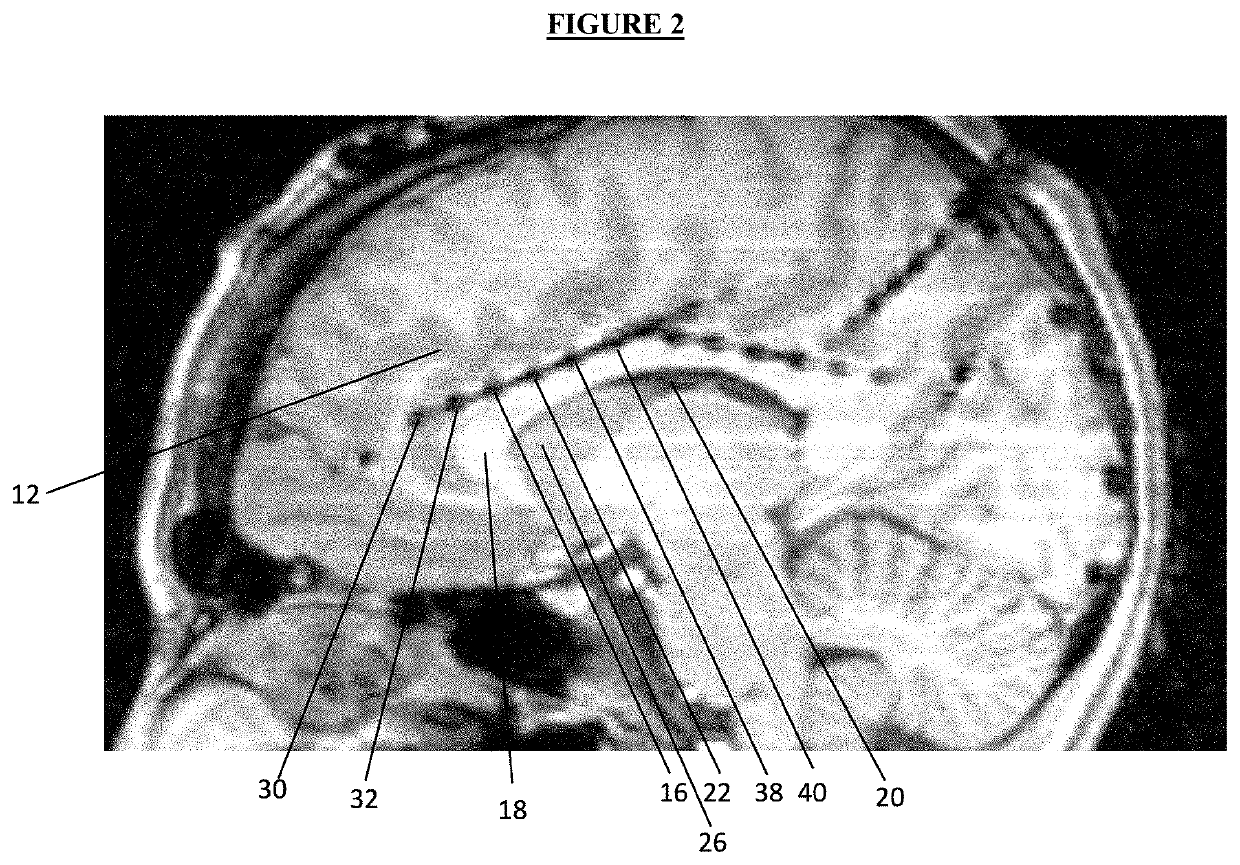Anxiolysis without sedation: awake craniotomy facilitated by continuous direct stimulation of cingulum bundle
a craniotomy and continuous stimulation technology, applied in the field of anxiolysis without se, can solve the problems of exacerbate dysphoria, patient inability to accurately provide responses or information to medical care providers, and abort awake mapping, so as to improve cognitive focus, improve well-being, or optimism, the effect of improving the affective ton
- Summary
- Abstract
- Description
- Claims
- Application Information
AI Technical Summary
Benefits of technology
Problems solved by technology
Method used
Image
Examples
Embodiment Construction
[0021]FIGS. 1a and 1b illustrate embodiments of electrode placement in two coronal planes in post-implantation MRI imaging of a single patient. In the embodiment in FIG. 1a, an electrode 16 is shown placed in the cingulum bundle 24, which runs anterior-posterior from front to back of the brain, sitting directly atop the corpus callosum 18. Surrounding brain anatomy is also shown, such as the superior frontal gyms 10, cingulate sulcus 12, cingulate gyms 14, corpus callosum transverse-running white matter structure 18, and lateral ventricle 20. FIG. 1b indicates an electrode 22 placed in the cingulum bundle 24.
[0022]FIG. 2 illustrates an embodiment of electrode placement in the sagittal plane in post-implantation MRI imaging. In this embodiment, which is a different view of FIGS. 1a and 1b, an embodiment of electrode placement is shown in a single array, e.g., electrodes 16, 22, 30, 32, 38, and 40. The electrodes are part of a stereotactic EEG depth electrode array (Ad-Tech; 0.86 mm d...
PUM
 Login to View More
Login to View More Abstract
Description
Claims
Application Information
 Login to View More
Login to View More - R&D
- Intellectual Property
- Life Sciences
- Materials
- Tech Scout
- Unparalleled Data Quality
- Higher Quality Content
- 60% Fewer Hallucinations
Browse by: Latest US Patents, China's latest patents, Technical Efficacy Thesaurus, Application Domain, Technology Topic, Popular Technical Reports.
© 2025 PatSnap. All rights reserved.Legal|Privacy policy|Modern Slavery Act Transparency Statement|Sitemap|About US| Contact US: help@patsnap.com



